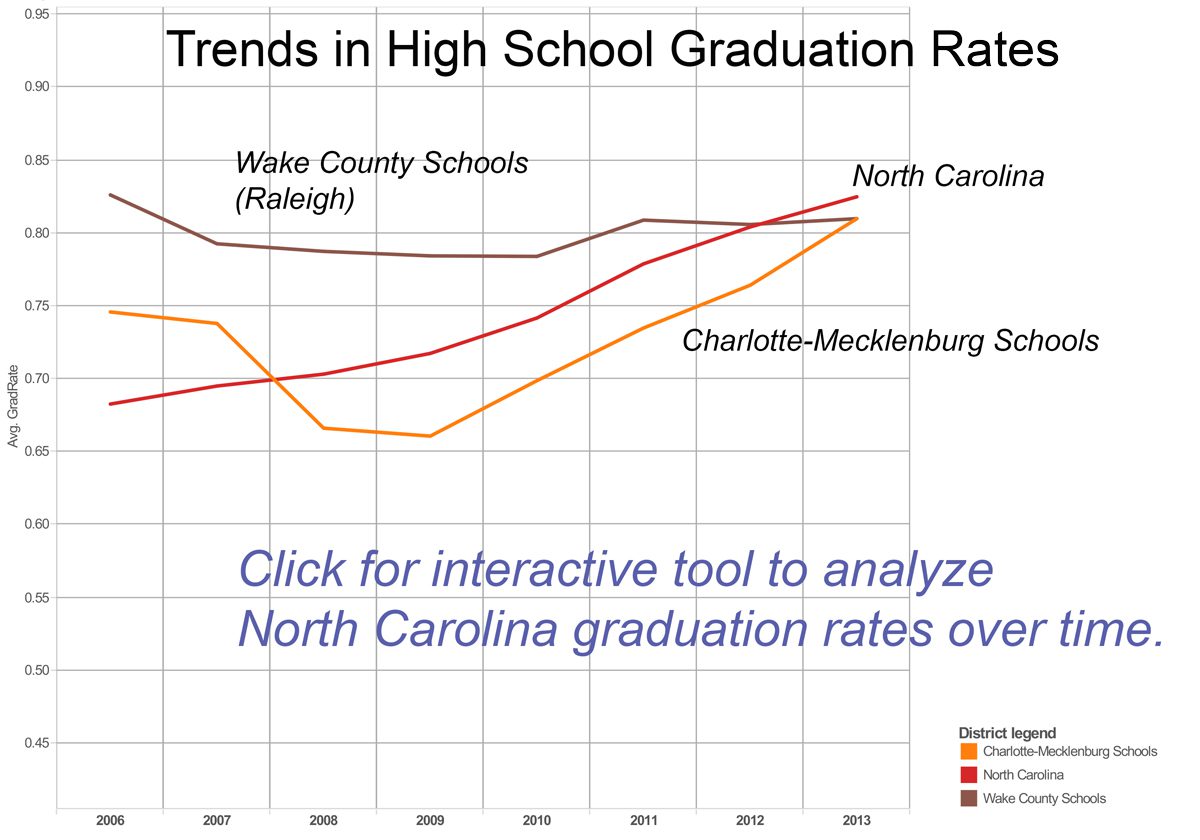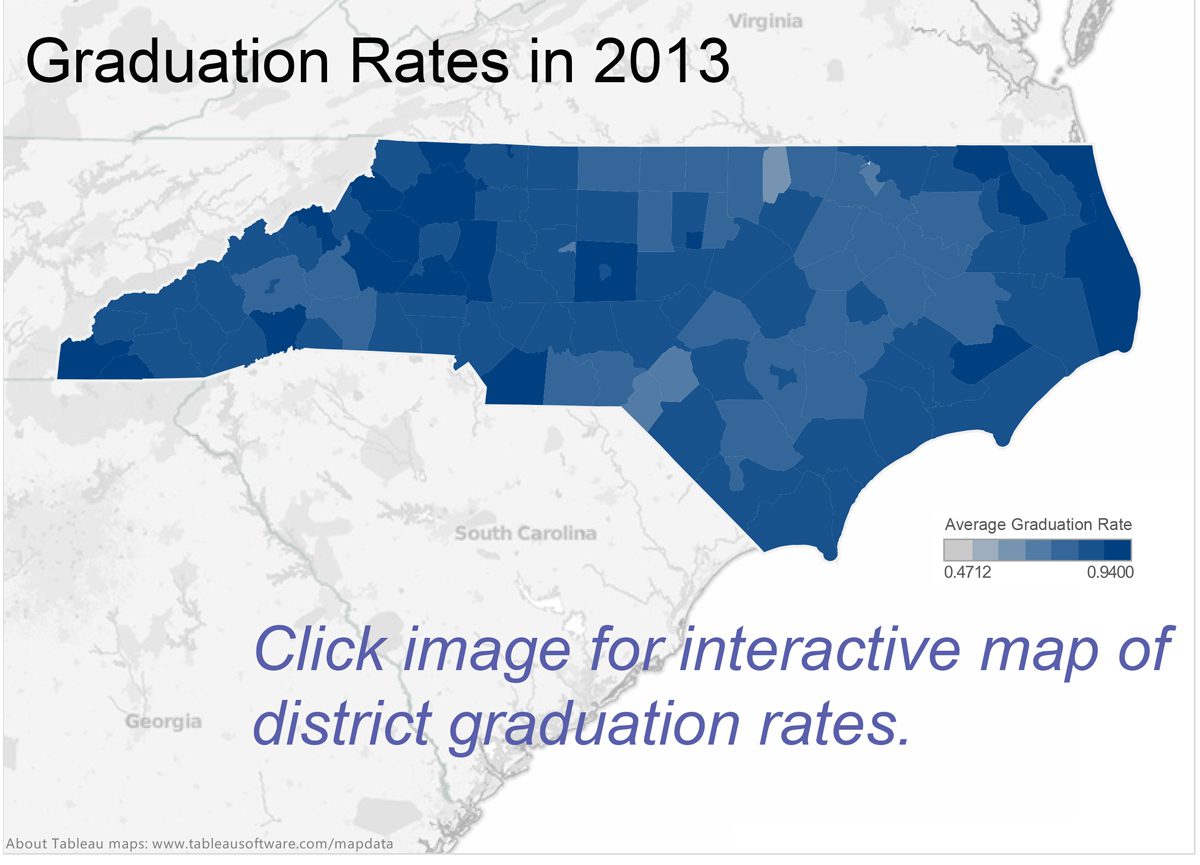As N.C. graduation rates rise, CMS and Wake are tied

Between 2006 and 2013, the rate of N.C. high school students graduating on time (in four years) has increased from 68.3 percent to 82.5 percent. The state’s two largest districts, Wake and Charlotte-Mecklenburg, now have the same rate, 81 percent. With our interactive dashboards, below, you can explore the data for all districts in North Carolina since 2006.
North Carolina began tracking the number of high school students that graduate in four years in 2006*. With eight years of data now available, several trends have garnered attention, including the convergence of CMS and Wake County rates. In 2006, the Wake graduation rate was 82.6 percent while CMS had a rate of 74.6 percent.
A data dashboard is available for customized comparisons of high school graduation rates between districts by clicking on the image below.
Most districts in the Charlotte region now have graduation rates near or above the state average. Several districts in the region have significantly higher graduation rates than the state average. Mooresville’s is the second-highest in the state at 93.4 percent.
In comparing rates between 2006 and 2013 across the state, only Wake County’s is lower, albeit only slightly, dropping from 82.6 percent to 81 percent in 2013.
As rates have moved up since 2006, some geographic patterns have also emerged. By 2013, higher rates were discernible along the coastline, with the state’s lowest rates along the interior coastal plain and along the northern border with Virginia, west to the foothills. The Piedmont, especially the area north of Charlotte to the area around the Virginia–Tennessee line, is the largest cluster of higher graduation rates. Other mountain districts with high graduation rates are in the far western portion of the state.
Another data dashboard is available to see these geographic trends as they change over time from 2006 to 2013. This dashboard also offers the ability to visually filter the rates in any given year to display areas of higher or lower graduation rates.
Although the measurement (cohort graduation rate) is standard through the period, there are some differences between districts to note. In North Carolina, districts have had the option to add their own additional requirements for graduation to the state’s basic requirements. During this period, Charlotte-Mecklenburg schools reduced some of their additional requirements, but not until last year – from 2012 to 2013.
The state of North Carolina requires 22 credits for ninth-graders entering in the 2012-2013 school year**. In Wake County, traditional diplomas require 26 credits and CTE (Career and Technical Education) diplomas require 22 credits. In CMS, the number of credits required for graduation was 28 until 2012. In 2013, the number required for graduation was reduced to 24. (To see if other school districts have requirements beyond the state minimum, consult individual school district websites.)
Another consideration when comparing rates over time are changes to state testing policy. In 2009, the state began a new policy requiring students who fail end-of-year exams to “re-test.” That policy ended in spring of this year. The overall N.C. rate moved up at a slightly faster pace in the years after this re-testing policy was instituted (see graph above).
Taking into account these differences in graduation requirements and changes to testing over time, the state is still experiencing a positive trend in high school graduation rates. As the graduation rates move up, differences between districts are narrowing, meaning the overall trend is toward more consistent graduation rates among districts. The largest urban districts (Wake County and Mecklenburg County) are just below the state average, but CMS rates have been tracking closely with the state’s improving rate in recent years and the difference from the state average has narrowed.
Try the tools linked above to do your own analysis of graduation rates in recent years. The tools allow for the comparison of any public school districts in the state.
* The four-year cohort graduation rate is the percent of students who entered ninth grade in a particular year who graduated four years later. See further explanation of the way this is calculated below.
A cohort refers to a high school class (using 2009-10 data as an example): Students in a school district in the ninth grade in 2006-07, plus students who transferred into the district in the grade appropriate to the cohort, minus students who transferred out of the district or are deceased. Dropout students count as non-graduates unless they later enroll in another school and graduate on time. Students who receive a GED are not counted as high school graduates for these calculations.

